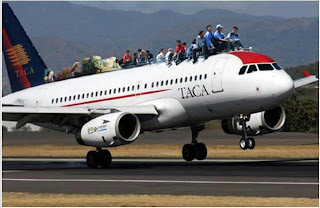Anachronisms are one of those things that divide people. Some hate them because they the kind of inaccuracies that can pollute the integrity of history in popular culture and others love them partly because they're fun to find and partly because they hint at the possibilities of parallel universes and alternative time lines.
One of the best science fiction novels that use alternative time lines is Man In a High Castle by Phillip K Dick, written in 1962 and the Hogo Award winner in 1963.. His alternative world is one where the United states has lost World War 2 and has been partitioned and occupied. One of the characters is an author who has written a banned book about the United States winning the second World War. You have to admire how Phillip K Dick created stories like this. Another book worth recommending is Ward Moore's Bring The Jubilee (1953); in a interview Phillip K Dick said this book was his inspiration for Man In A High Castle.
History pivots on such small events. The outcome of world history probably would not have changed much if the Hindenburg did not crash and burn in Lakehurst NJ in 1938 -except maybe Led Zeppelin wouldn't have that great photo for the cover art on their second album. The disaster did contribute to the end of large rigid passenger airships but it was the legend more than the facts that killed the concept. To this day airships are seen as less than safe.
The outer fabric skin was coated a mixture of cellulose nitrate and aluminum flakes which did an excellent job of reflecting the sun's heat and preventing the gas bags from over expansion but ironically the coating may have been more flammable than the hydrogen gas.

The Hindenburg's first year of commercial operation was a glowing success travelling almost 200,000 miles, carrying 2,798 passengers and over 160 tons of freight. The Graf Zepplin had nine years of safe service (1928-1937) with 590 commercial flights and was replaced by the Graf Zeppelin 2 that had 30 flights from 1938 to 1940. In the end all of these air giants were scrapped for their aluminum - magnesium alloy structure that was recycled into other aircraft during the war.
There was a darker side to Airship travel back then where Nazi Germany used it for propaganda and political purposes. These aircraft had the prestige of the Space Shuttle back then and many of the Zeppelin flights went to Brazil. The Nazis had developed strong political links with Brazil's elite as well as Portugal's government. Both countries helped supply the Nazi war machine some of which is spelled out in the book Trading With The Enemy by Charles Higman.
And yet every few years the idea of re-purposing the large rigid airship comes up again. The economics are promising because there are things an airship can do that other forms of transportation can not compete with. There is one company in Canada that wants to build heavy lift airships to supply mining operations in the Northwest Territories. An airship can do twice the work at half the cost without the ecological damage of building and maintaining a road .
But the one possibility could be the return to passenger service. Once airships were the fasted way to cross the Atlantic at three times the speed of of an ocean liner. Today airships could offer the opposite of jet travel, leisure instead of speed. Currently there is on company that has a 12 passenger airship that flies tourists over San Francisco and the surrounding wine country.
Once about twenty years ago I spent an afternoon with a fellow who worked with German company that wanted to build a 50 passenger airship that would run from New York City (actually Teterboro Airport) to Atlantic City. Trump Casinos would ferry high rollers on what would have be the best complimentary ride to the gambling mecca along the Jersey Shore. It would be faster than a limo and less cost per passenger than a helicopter -which at the time Trump Casinos were flying people in to a heliport in Egg harbor Township. As a bonus the airship would also be a traveling billboard. The economic changed as other nearby locations, including New York, legalized casino gambling and the Trump casinos lost there edge in Atlantic City.
The airship might return as part of the space age. Felix Baumgartner skydived from the edge of outer space and he was taken up there not on a rocket but on a balloon.
The next giant leap for mankind is cheap and easy access to to outer space. The space elevator once the creation of Arthur C Clarke just hangs on the very edge technological feasibility. I read one paper last year about using balloons to cheaply assist lifting freight up such an elevator for the first 60,000 ft.









No comments:
Post a Comment